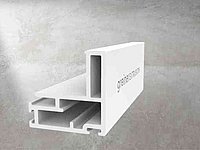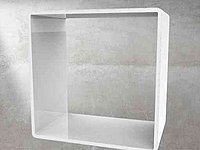All profiles



















Launch 3D view

Glass spacers
These spacers in the edge seals of insulating glass units are filled with a desiccant that absorbs the residual moisture in the space between the window panes.
Launch 3D view

Sliding profile
Sliding profiles are used between two materials to minimise friction.
Launch 3D view

Edge protection
Edge protection profiles seal the corners of goods and protect their surface from damage.
Launch 3D view

Angle staff
Angel staffs are suitable for the sealing between the cladding and doors/windows.
Launch 3D view

Collision protection
Collision protection profiles are used on heavily-trafficked walkways and driveways and are intended to prevent impact damage.
Launch 3D view

Fence profile
Due to the material properties of PVC, fence profiles are extremely stable and can withstand extreme weather conditions.
Launch 3D view

2x7 pocket rail
A 2x7 pocket rail works as an upper and lower horizontal framing for the vertical elements of fences.
Launch 3D view

7-8 x 11 T&G profile
The vertically installed profiles form together a privacy fence.
Launch 3D view

Casement frame
This type of profile forms the frame of an outward opening window system.
Launch 3D view

Foamed cladding profile
The coextruded cladding profiles with a foam core often adorn U.S. homes.
Launch 3D view

Foamed decking profile
The foamed decking boards with a coex layer are the best choice for resistant constructions with low weight.
Launch 3D view

Double hung frame
Profiles of this kind form the frames of double-hung windows, in which the window elements can slide vertically.
Launch 3D view

Double hung jamb
The coextruded profiles form the frames of double-hung windows, in which the window elements can slide vertically.
Launch 3D view

Double hung keeper rail
A keeper rail functions as an interlock between two elements of a single-hung or double-hung window.
Launch 3D view

Mullion
In this variant of two- or more sash windows, the mullion remains between the two sashes when opened.
Launch 3D view

Sash
Sliding elements of a single-hung or double-hung window are made from these profiles.
Launch 3D view

Coex sill frame
This coextruded lower part of a window frame forms the sill and is beveled outward to allow rainwater to drain away.
Launch 3D view

Sill frame
This lower part of a window frame forms the sill and is beveled outward to allow rainwater to drain away.
Launch 3D view

Handrail
Handrails made of WPC with coex perform particularly well with their high resistance to weathering and long durability.






